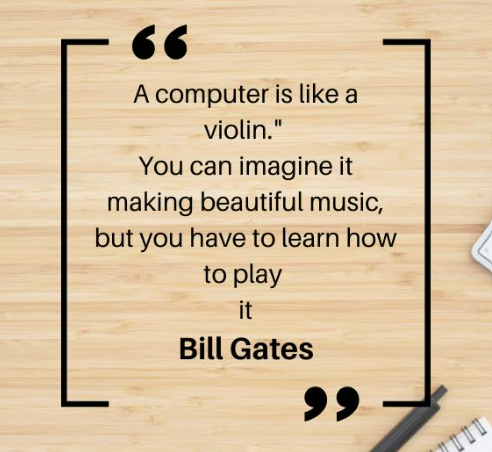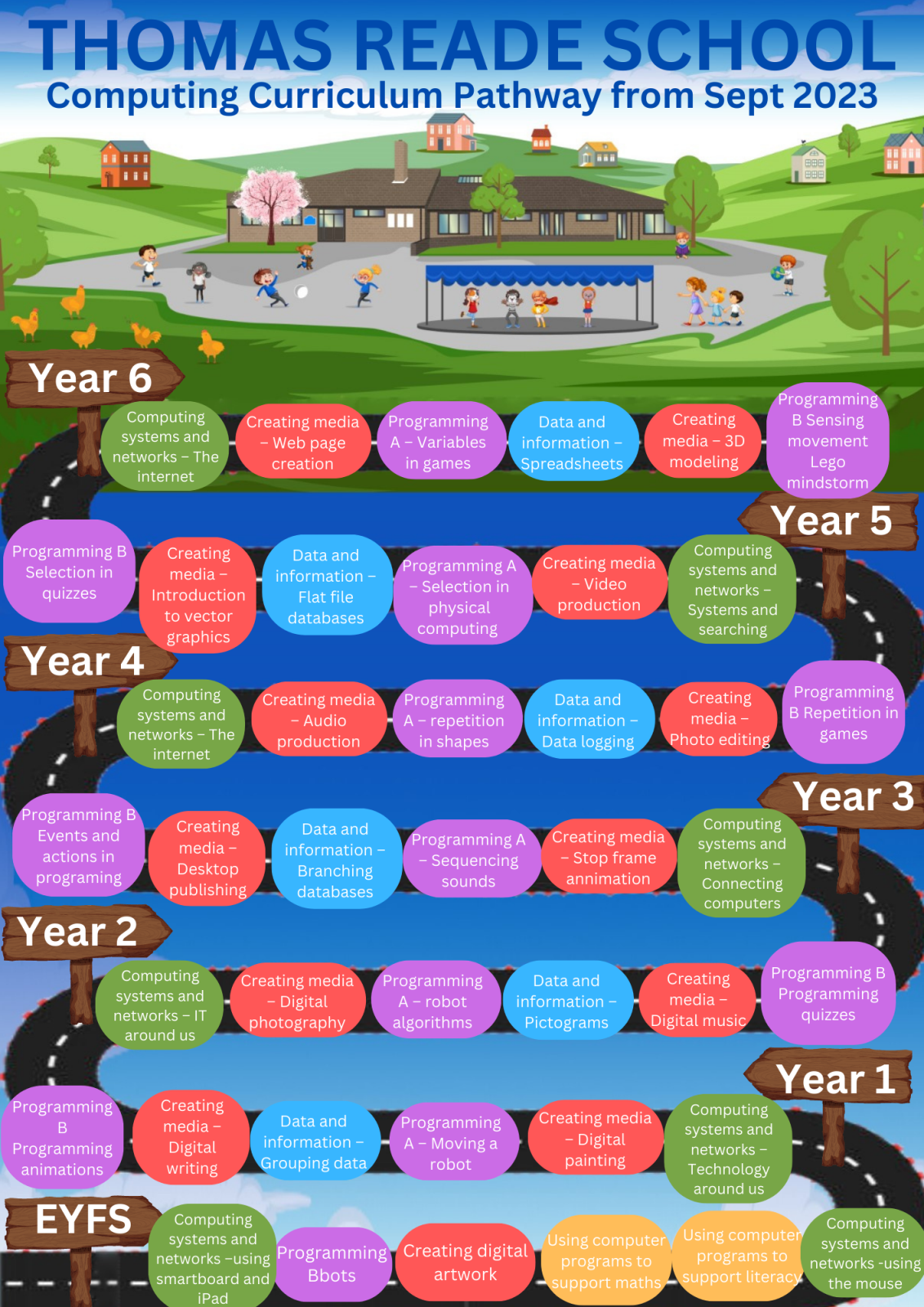The autolist folder CURRICULUM/ICT does not exist or has been moved.
Computing

Thomas Reade are moving towards using the Teach Computing Curriculum which was created by the Raspberry Pi Foundation on behalf of the National Centre for Computing Education (NCCE). There is some cross-over this year as classes move from a previous curriculum to the Teach Computing Curriculum.
The units for key stages 1 and 2 are based on a spiral curriculum where themes are revisited in each year group. Pupils revisit each theme through a new unit that consolidates and builds on prior learning within that theme.
Within the Teach Computing Curriculum, every year group learns through units within the same four themes, which combine the ten strands identified by the National Centre for Computing Education. Information on the four themes is given below.
Information above taken from the National Centre for Computing Education resources. (ncce.io/tcc)
The following three strands are not taught explicitly but included in the four main themes.
Safety and security — Understand risks when using technology, and how to protect individuals and systems
Impact of technology — Understand how individuals, systems, and society as a whole interact with computer systems
Effective use of tools — Use software tools to support computing work
Computing systems and networks
Computer networks — Understand how networks can be used to retrieve and share information, and how they come with associated risks.
Computer systems — Understand what a computer is, and how its constituent parts function together as a whole.
Programming
Algorithms — Be able to comprehend, design, create, and evaluate algorithms
Programming — Create software to allow computers to solve problems
Design and development — Understand the activities involved in planning, creating, and evaluating computing artefacts
Data and information
Data and information — Understand how data is stored, organised, and used to represent real-world artefacts and scenarios
Creating media
Creating media — Select and create a range of media including text, images, sounds, and video
Design and development — Understand the activities involved in planning, creating, and evaluating computing artefacts
Curriculum pathway


